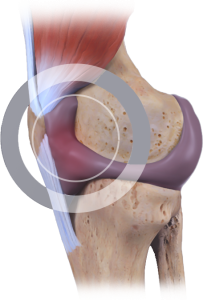Arthritis of the knee is a prominent reason of disability in the world. Knee arthritis can make it hard to do many everyday activities, such as walking or climbing stairs.
When the smooth cushion between bones called cartilage breaks down, joints can get painful, swollen and difficult to move. Arthritis can affect any joint, but it occurs most often in weight bearing joints such as knees and hips. Arthritis can happen at any age, but it commonly starts in the 50s and affects women more than men.

Symptoms
- Pain on the inner side of knee stiffness
- Clicking or cracking sound when a joint bends
- Swelling around the knee
- Joint instability or buckling (knee gives out)
- Falls
People with osteoarthritis experience as much as 30 percent more falls and have a 20 percent greater risk of fracture than those without OA.
Diagnosis
X-ray: Simple weight bearing X-rays can show knee joint damage or changes related to osteoarthritis such as bending of legs
MRI: Magnetic resonance imaging (MRI) gives a better view of cartilage and other parts of the joint
Treatment: There is no cure for OA, but medication, nondrug methods and can help to ease pain. As a last resort, a damaged joint can be surgically replaced during total knee replacement.
Medication
- Analgesics: These are pain relievers and include.
- Ointments and counterirritants: These are the most commonly used drugs to ease inflammation and pain of arthritis.
Exercise
- Exercises to build muscles around painful joints and helps to ease the stress on them.
- Stretching helps to reduce stiffness and keep joints moving.
- Aerobic or cardio exercises like cycling help improve stamina and energy levels and reduce excess weight.
- Balance exercises help strengthen small muscles around the knees and ankles and help prevent falls.

Prevention
To prevent arthritis, one should avoid squatting, sitting cross-legged, the use of Indian toilets, and standing for long periods. Static quadriceps exercise, cycling, and swimming are the three best exercises for early-stage patients of knee arthritis. The food should also be rich in protein, calcium, and antioxidants derived from dairy products and seasonal fruits and vegetables. To avoid vitamin D deficiency, adequate exposure to sunlight is necessary. Activities like squatting, sitting cross-legged, use of Indian toilets, and not using proper footwear while walking result in overuse and straining of the knee joint.
Surgery
In advance stages of arthritis Total knee replacement provides an excellent treatment option. Many new technological advancementsare available these days in the field of Knee replacement. Knee replacement not only restores the normal alignment of damaged joints but it also helps in improving the range of motion of the joint. After total knee replacement surgery patient has better walking pattern because a replaced joint carries the body weight better than a damaged bent knee joint.
Newer Knee implants which are available these days, very closely mimic the function of the natural knee. In general population there are many myths associated with knee replacement surgery, however it is a safe and successful surgery which has stood the test of time.
Patients should make a timely decision to undergo a knee replacement for best results. Delay in surgery does not help the patient’s cause because this aggravates other problems like obesity, and osteoporosis due to limited mobility of damaged knees. Delay in surgery also leads to delayed recovery after surgery; hence timing the surgery is of paramount importance.

About The Expert
Dr. Harmandeep Singh specializes in Total Knee Replacement, Total Hip Replacement, Revision Joint Replacement surgery and Traumatology (Treatment of Fractures). He also has expertise in Arthroscopic Knee Surgery.
Born in Ludhiana, Punjab, he received his graduate medical degree (MBBS) from Christian Medical College, Ludhiana in 2000. in 2005 he completed his Masters in Orthopedics (MS) from Christian Medical College. He further received advanced fellowship training in adult joint replacement from prestigious Cleveland Clinic, USA and The Christ Hospital, Cincinnati, USA in 2013. He is a recipient of AO Trauma International Fellowship during which he received training in the field of Minimally Invasive Fracture treatment under Prof. C Krettek at Hannover Medical School, Germany in 2015.
